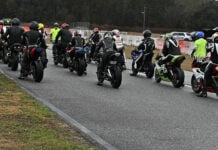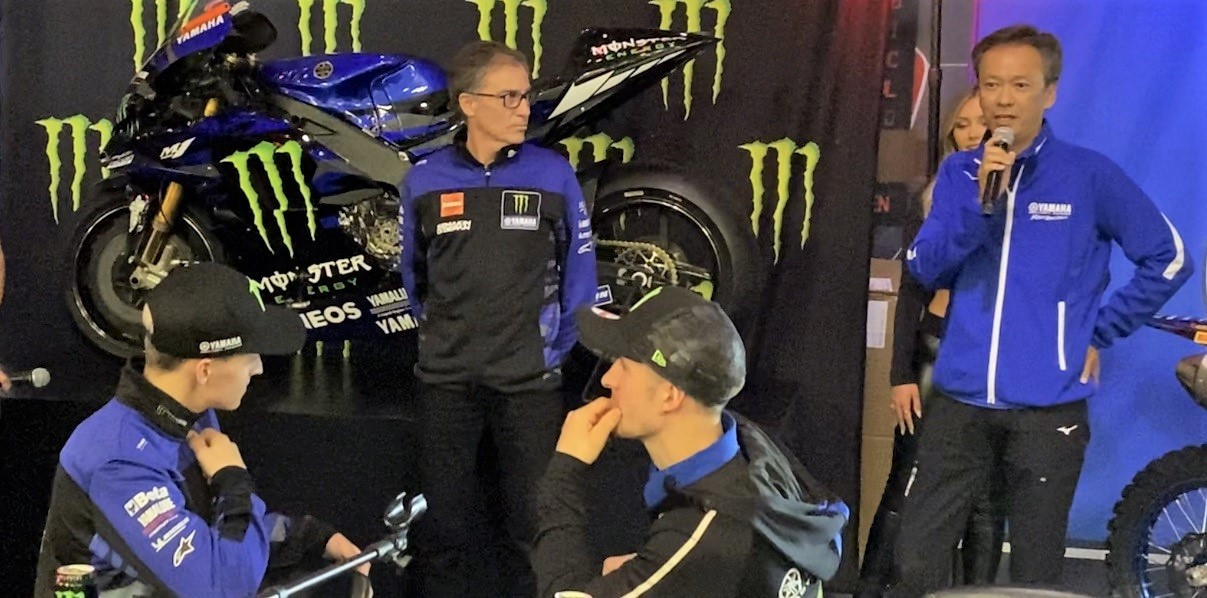During the post-race MotoGP test at Valencia in November 2022, World Championship runner-up Fabio Quartararo couldn’t hide the disappointment he felt after sampling the latest engine for his Monster Energy Yamaha YZR-M1.
“What we expected from the new engine is not what we felt today,” Quartararo was quote as saying in a press release issued by the team.
And Quartararo had a right to be disappointed.
While struggling with a significant lack of top speed compared to his rivals during MotoGP races in 2022, Quartararo tested new engines for 2023 at Catalunya and Misano with good results. The engines couldn’t be put into use during 2022 because technical rules mandate that all engines to be used must be sealed at the start of the season, but things were looking promising for 2023.
During the test at Catalunya in June, the Frenchman gained 4 mph in top speed compared to his best top speed during the race and was fastest in terms of lap times, indicating the new engine was substantially more powerful while still being useable in the other parts of the track.
At the Misano test in September, Quartararo was again quickest in terms of lap times and essentially equal to the fastest bikes in terms of top speed.
Fast forward to the test at Valencia in November, where Quartararo’s best trap speed with Yamaha’s latest engine was 203.44 mph (327.4 kph), slower than he went during the race, 205.36 mph (330.5 kph), leading to his disappointment.
So, what happened?
The Monster Energy/Yamaha Racing media event on January 20 in San Diego was attended by Quartararo and Yamaha Motor Racing Managing Director Lin Jarvis. When it was his turn to speak, Jarvis directed attention to another special guest he introduced as the person “in charge of all racing activities at Yamaha” and “in charge of all motorcycle engineering:” Toyoshi Nishida.
Officially, Nishida is an Executive Officer and the Executive Manager for the PF (Platform) Body Development Unit at Yamaha Motor Co., Ltd. in Japan. He also represents Yamaha on the Motorcycle Sports Manufacturers Association (MSMA) committee, which works with IRTA, FIM, and Dorna to create MotoGP technical regulations.
When asked about what happened at the Valencia test, Nishida exclusively told Roadracingworld.com in English, “There was some error. Not technical issue, but our development engineering side preparation issues. We have to say we are very sorry to Fabio. We could not prepare the best condition bike for the Valencia test compared to the Misano test. The bike condition was not improved for the Valencia test. That was our side.
“We couldn’t adjust to the best conditions in Valencia. For example, the gear ratios or the atmosphere or temperature or humidity or something. We couldn’t adjust for the best conditions in Valencia. That’s what I mean, preparation errors.
“Unfortunately, the result was we never expected those results. We already caught the root cause of that trouble and are working hard on making the improvement for the next Sepang test.”
Nishida expressed confidence that the problem(s) have been rectified and that Yamaha is still on the right path with its engine development. That chould be confirmed when test rider Cal Crutchlow takes the 2023 YZR-M1 out on track during the “shakedown” test days February 5-7 at Sepang.
“The [engine] development is going well. However, at this moment, not complete,” said Nishida. “We are going to test at the Malaysia test in February, and after that we take the feedback from the factory riders and we will do the final improvements. We will adapt the final improvements for the final test in Portugal, before MotoGP starts racing [and the engines must be sealed for 2023]. But for now, progress is good.”
The official MotoGP pre-season test at Sepang is February 10-12, and the official pre-season test at Algarve International Circuit in Portugal is March 11-12.






